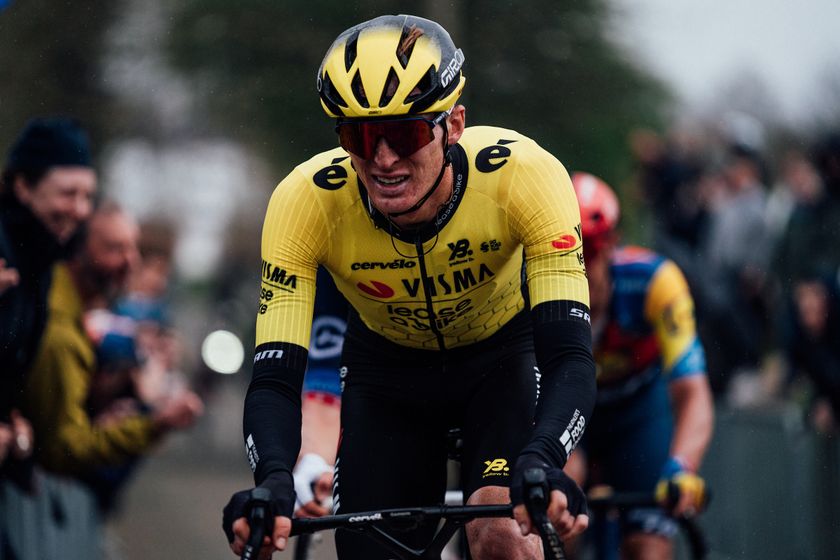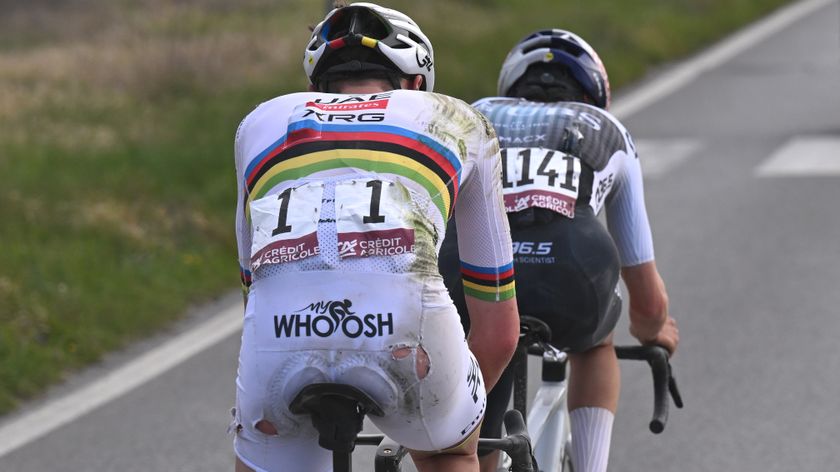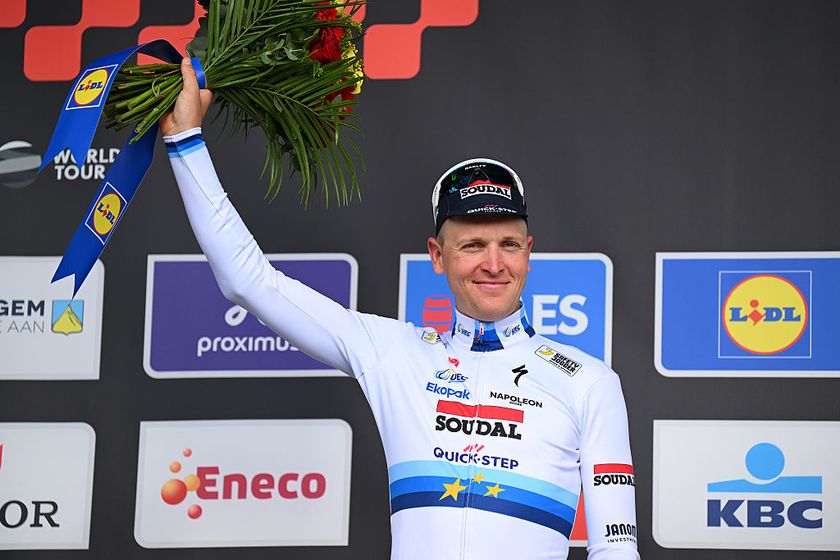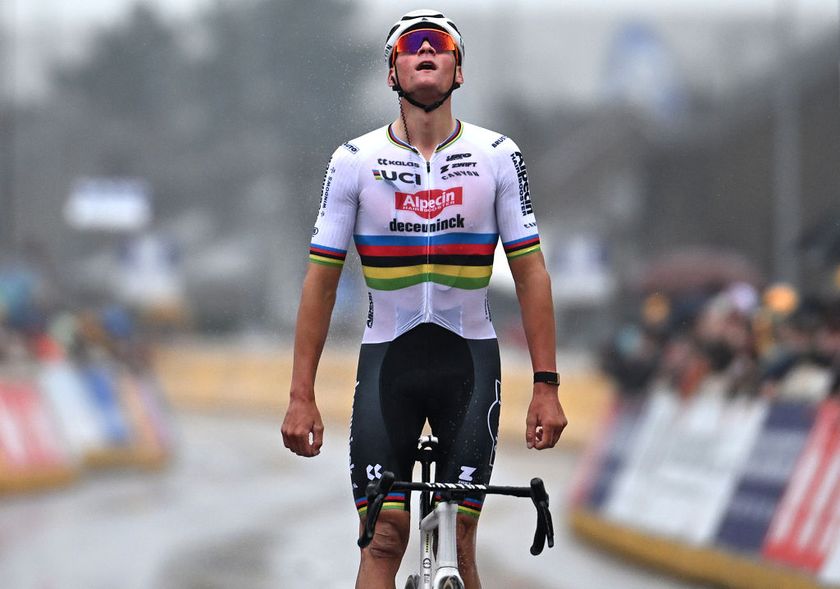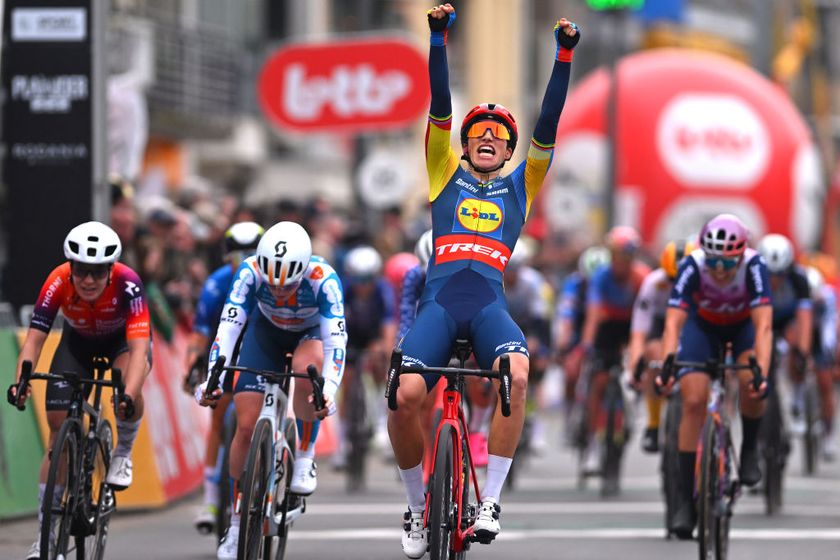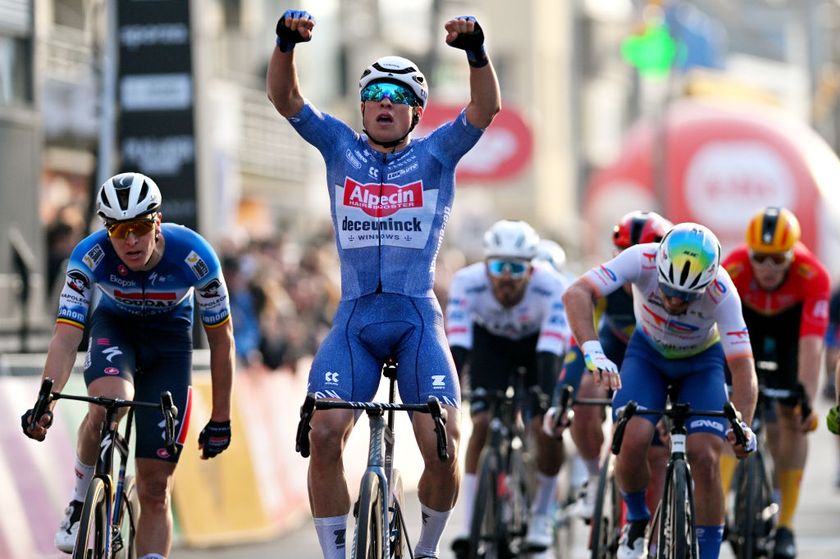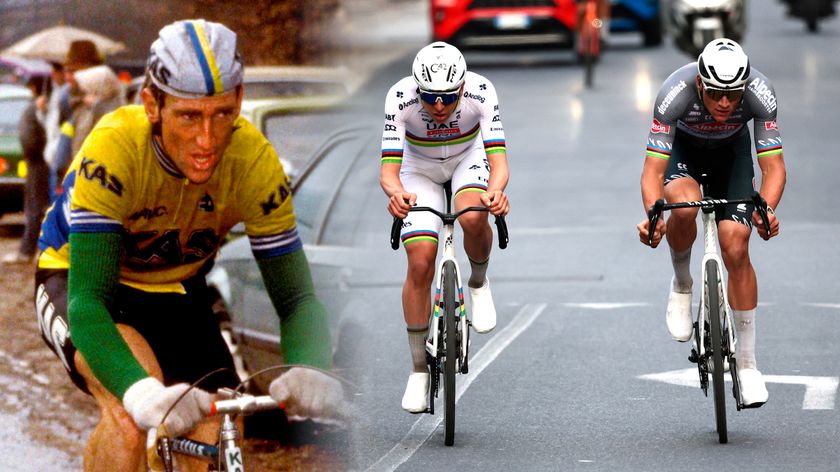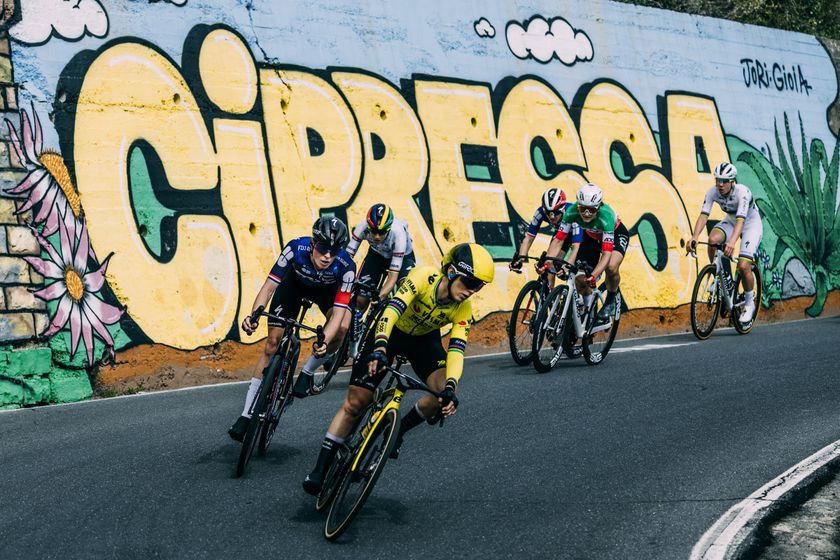The anatomy of bike position
All modern thinking about how to fit a human to a bike is reductionist in approach. Take a complex...
May 6, 2008
In this article Cyclingnews' Form and Fitness panel member and renowned bike fit specialist, Steve Hogg, takes you through his thoughts on bike position. The following is a transcript of a speech Steve gave in 2007.
All modern thinking about how to fit a human to a bike is reductionist in approach. Take a complex system of interactions like a human being, quantify it somehow and fit it to a bike. Because it's a complex system, break down that complexity into bite size pieces by examining aspects of its interaction with the bike in a narrow sense. The approach might be strictly biomechanical, perhaps measurement based, statistical norm based or whatever. It may have a proprietary name; Fit Kit, Bio Racer and Wobblenaught spring to mind, though there are others.
That is how the world thinks of a bike fit process. It's a succession of steps of narrow focus but without any overarching idea of holistic intent, and that's what I mean by a reductionist approach. The formula driven methods this type of approach engenders are prevalent throughout the cycling world and don't work optimally for large numbers of people in any way that can be shown or explained. I spend a large part of my working life getting results for the people that the above style of thinking has failed.
The two major forces working on a bike rider are gravity and wind drag. That should be self evident and beyond argument. Our pattern of muscular enlistment changes as we change our relationship to gravity, and wind resistance increases as the square of the increase in speed. It follows that how we relate our bodies to gravity and how we equip ourselves to overcome wind drag are the keys to optimal performance. Another necessity is comfort. I would define lack of comfort as muscles being enlisted for purposes they weren't designed for and / or for periods that they can't cope with.
Comfort + Efficiency = Performance.
Brain activity
Get The Leadout Newsletter
The latest race content, interviews, features, reviews and expert buying guides, direct to your inbox!
Observation One: "90 percent of brain activity is tied up in relating the body to gravity" - Roger Sperry: 1981 Nobel Prize Winner for brain research.
To talk more about the implications of this with regard to bike position we need to know:
Posturally or phasically
Observation Two: Our external musculature works in one of two ways, posturally or phasically. If beset by a challenge, the brain will always prioritise the muscles acting posturally as they are the ones that allow us to resist gravity, maintain an erect position and play a major part in breathing. In contrast muscles acting phasically are the muscles that generate power to propel bicycle and rider. Yet the brain gives them a lower priority because there is greater evolutionary value in being able to breathe than there is in being able to move.
The postural / phasic split is a generalisation but an accurate one. Some postural muscles like the hamstrings and gastrocnemius act phasically on a bike because they are relieved of the need to help maintain an erect posture such as they are when standing.
Neurological basis to an optimal bike position
Observation Three: Taken together Observations one and two mean that there is a neurological basis to an optimal bike position. To be most efficient, we need to sit on a bike in such a way as to enlist the minimum amount of postural musculature. If we achieve that, we can devote the greatest effort, both neurologically and physiologically, to switching on and off the muscles acting phasically that generate power, and the minimum effort to controlling the higher priority postural muscles that allow us to hold a position on a bike relative to gravity.
When needlessly enlisted, these postural muscles rob heart beats, blood flow and oxygen from the muscles that propel the bike and by doing so, diminish performance
Minimum effort maximum gain
Observation Four: The only way this is achievable on a UCI legal bike is to have the seat the minimum distance behind the bottom bracket that allows the rider to cantilever their torso out from their pelvis with no more effort required of the upper body during periods of high intensity than the minimum necessary to steer and control the bike.
Why is this a big deal?
Lungs
Observation Five: There are 20 torso muscles used in respiration. Of those 20, 18 have postural implications which mean that they can be used to breathe with, or they can be used to bear weight and to stabilise with. If you want to breathe to fullest capacity, then these muscles need to be able to relax to allow full breathing. This isn't possible if they carry tension because they are being used to bear weight or to resist pedaling forces. Equally, many riders have poor ability to extend their thoracic spines and sit on their bikes with a pronounced curve in their spine as viewed from the side. If you function like this, you are reducing your effective lung capacity as limited ability to extend the spine means a shorter effective torso length, which in turn equals lack of room for the lungs to expand.
I have to digress here. Many triathletes and TT riders ride much further forward than what I have described above and support significant weight with their arms and shoulder complex while still performing well. How can this be?
My experience is this. I am happy to believe that a rider can trade off comfort for increased aerodynamic efficiency and possible increased performance even at the cost of reducing effective lung capacity to whatever degree, and still ride as fast or faster in TT and Tri situations. But there is no getting away from the fact that riding like this means a lot of weight is supported by the upper body while concurrently, propulsive power is developed by the lower body. Where do the stresses of this approach meet?
In the lumbar and / or thoracic spine.
Some people can ride quite effectively like this at some structural cost over time. But many can't and so it is not for everyone. Those who can make it work are best advised to make structural maintenance and improvement a high priority in their training; otherwise they can butt up against the limits that their structure and bike position imposes on them more quickly than a position based on the principles I am talking about here.
Structural fitness
Observation Six: The major variable in how far back the seat needs to be will not be how the rider is proportioned, though that can't be totally discounted. It will be the level of structural fitness (posture / flexibility / core strength) of the rider and the techniques that they bring to the task. An optimal bike position is a reflection of the functional abilities of the rider and considers the purpose they want to put their body and bike to for the period they would like to do it.
Cleat position
Observation Seven: Cleat position plays a much larger part in the entire picture of rider on bike than is generally realised. Every watt of power you produce is transferred to the bike via your feet on the pedals. This relationship needs to be optimised if the goal is efficient and comfortable performance. The world generally believes that the centre of the first metatarsophalangeal joint (ball of foot) should be over the pedal axle.
As a general recommendation this is rubbish and demonstrably so. Grab a broomstick, cricket bat, baseball bat or other long lever. Hold your lever in both hands with elbows comfortably bent. Stand a friend in front of you at a distance that allows you to place the end of your lever a few inches beyond the side of their shoulder. Exert force and try and move your friend sideways. You won't be very effective.
Now take a small step forward so that about ¼ or 1/5 of the lever extends beyond your friends' shoulder. Exert force again and you will move your friend with much greater ease. Most of you will realise the analogy here. For those who don't, the first position is ball of the foot over the pedal axle and the second position is ball of the foot in front of the pedal axle. The key with this is just how far in front. Too much foot over the pedal will give you massive leverage but limit ability to jump hard in a sprint. Not enough foot over the pedal means a lot of effort for limited result in high torque per stroke riding as the calves than have to work hard while attempting to stabilise foot on pedal.
Any cleat position will allow the rider to produce good power. The question is for how long and at what risk of injury?
Germany's Gotz Heine believes that for greatest efficiency, the tarsometatarsal joint (the midfoot) should be over the pedal axle and has any amount of compelling evidence to back this up. For sustained steady effort of high or low intensity, this position, correctly applied will mean greater ability to sustain power over time and / or better ability to recover from severe efforts. TT's, pursuiting, Audax riding, road racing and triathlon are ideal for this kind of cleat positioning.
With this style of midfoot or arch cleat positioning, the largest muscles; glutes, hamstrings and quadriceps are heavily enlisted. All are close to the torso meaning that vascular flow is less interrupted and the potential problems that arise from transferring power through the foot and ankle are largely eliminated. What is also obvious using torque analysis is that midfoot cleat positioning flattens the riders torque curve for a given power output. In essence the rider is pushing for longer per stroke rather than harder.
This is important because a lower torque peak for the same wattage equals lower peak muscular contraction which in turn equals less fatigue and / or quicker recovery. All of which means greater ability to sustain a given load. Whether a rider should decide to experiment with midfoot cleat position will be determined by what kind of riding the rider prioritises. Crits and track events with plentiful changes in speed are best served by forefoot cleat positioning. For steadier paced riding, fast or slow, it is worth investigating midfoot cleat position and making a personal judgement.
A bike is a symmetrical but are we?
Observation Eight: A bike is a symmetrical apparatus in a positional sense. The handlebars and pedals are equidistant from the centre line and the seat is over the centre line. I have positioned I don't know how many thousands of riders and I'm still looking for the first symmetrical one. Most people have one side of their pelvis higher than the other, one facile side and one clumsy side. Many have limb length discrepancies and neurological and sensory deficits. What that means is that everybody is functionally asymmetrical to varying degrees and many are measurably asymmetrical as well. When an asymmetrical rider is placed on a symmetrical bike, they will always maladapt. One of the major tasks of positioning is to achieve the greatest level of functional symmetry for the rider consistent with the limits imposed on them by their structure and degree of function.
Back to neurology again
Observation Nine: Fact 8 means that we are back to neurology again. The only way to achieve greater symmetry on a bike is to improve the way our brains and bodies function which brings me to a much abused word - fitness. Culturally we are inclined to think of fitness as an efficient cardiovascular system and the development of strong muscles. That isn't fitness! At best it is an incomplete description and covers only one aspect of fitness. Neurological fitness is the measure of how accurately signals from the brain travel to their destinations around the body and how accurately feedback from the body gets back to the brain. Neurological fitness is fundamental.
The sole (non chemical) determinant of neurological fitness is structural fitness. In other words, adequate posture, flexibility and core strength. If we have adequate posture, flexibility and core strength, nerve signals traveling around the body are not impeded by overly tight muscles or misaligned vertebrae. I have never, ever, ever seen a rider whose pain or poor performance was caused by muscles that were too strong or lungs that were too efficient. Always, issues are caused by the limitations of the structure we have inherited and / or developed and far too often, neglected. If you want to perform on a bike, be fit in the fullest sense of the word.
If you train 15 hours a week, still do so, but make sure that 3 - 4 hours of that total time is devoted to structural maintenance and improvement.
As well as maintaining and improving your structure, maintain a wholesome diet. If a food has been processed to the point where it isn't obvious what it came from; you are better off not eating it as other than an occasional treat. If internal organs are under any pressure because of poor nutrition, then general lack of performance and hard to resolve physical issues can result. My experience is that it is not possible to have good core strength in a dynamic situation without a healthy bowel.
To be truly fit you need to understand that the way that our body functions is the external manifestation of the brains organisation filtered through accidents of birth and development. There is no chicken or egg in this, it is a loop. Your body does what your brain tells it to but your brain learns what your body does. If you want to change how your body works, change how your brain functions. How do you do that?
By improving how your body works. Stretching, core strength exercise, Yoga, Pilates, functional exercise regimes or any method of structural self improvement is mandatory if you really want to perform to potential on a bike. Recognising this leads to:
The nervous system
Observation 10: Our nervous system sends 4 billion signals per second to the brain, but the brain can only process 2 thousand signals per second of this. Proprioception is the name given to our brains awareness of our bodies in space. Given our lack of processing capacity relative to the amount of stimuli our brains receive from the body, you can see that proprioceptive awareness is a much filtered thing. Every time you stretch or stimulate a muscle, the muscle sends a proprioceptive charge up the spine saying "Remember me?" and the brain obligingly devotes more space to that part of the body.
We all know riders who hunger for the latest lightweight, go fast bits but would be better served by losing the excess ballast that they carry around the middle. There is an analogy between that example and an adequate level of structural fitness. Most riders will make greater improvements in their performance if they work to improve how their bodies function structurally and by so doing, improve the function of their central nervous system, than they ever will by spending money on equipment.
Aerodynamics & ego
Observation 11: Aerodynamics is a powerful marketing tool. I absolutely agree we need to be as aerodynamic as possible to perform well consistent with our proportions, level of structural fitness and the use we will put your bike and body to. Set your bike position to reflect your structural realities, not your ego.
Your body is something over 90% of the total wind drag on a bike. As well as spending money on the latest aerodynamic go fast gear, spend time on improving how you function so that you can comfortably assume a more aerodynamic position.
To conclude, think of this. If you want to perform to your potential on a bike you need adequate structural fitness. The better you function off the bike, the better you will function on the bike. 'Adequate', by the way means well above average, because the average level of structural fitness in our society is appalling.
There are only two general causes of niggles, injury, pain or lack of performance on a bike. The first reason is problems with your bike position. I or someone like me can address that.
The second is significant shortcomings with your structural fitness. Only you can address that. Some one like me is a high quality band aid. I can't change you, only the way that you relate to the bike. Many structural issues and problems of symmetry can be worked around adequately with a good bike position using a holistic, structural approach to the task. But the problems can only be solved off the bike.
Understanding this will leave many of you thinking "I need to do something". There are only 3 motivating factors that change human behavior; pain, fear or ambition. Which button do you want to press?
More fitness features
